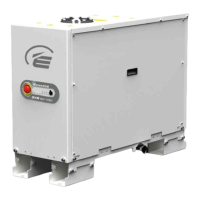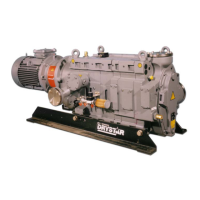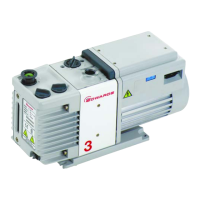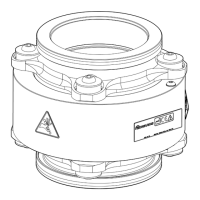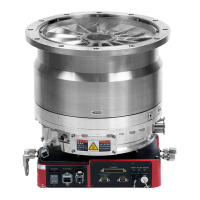M588-00-880 Issue E
Page 20 © Edwards Limited 2015. All rights reserved.
Edwards and the Edwards logo are trademarks of Edwards Limited.
Installation
3.1 Locate the dry pumping system
Move the dry pumping system to its operating position using any of the following methods:
Use a forklift or pallet truck to lift the dry pumping system.
When using a forklift or pallet truck to lift the dry pumping system, be sure to insert the forks under the base
rail on the side of the dry pumping system otherwise the exhaust may be damaged. The base rail has cut-outs
for forklift access.
Refer to the installation drawings in Appendix A1 for topple angle and centre of gravity information.
Lift the dry pumping system by the eyebolts.
Each dry pumping system is provided with four lifting eyebolts to enable lifting, Figure 2 item 4.
Ensure that all the lifting eyebolts are used when lifting the dry pumping system. Once the dry pumping system has
been moved to its location, remove the lifting eyebolts and replace with the lifting eyebolt covers supplied with the
dry pumping system.
3.1.1 Dry pumping systems with optional castors
GXS dry pumping systems are supplied with an option of skids or castors. For dry pumping systems fitted with castors
it is important to note that the castors are intended only to aid manoeuvre of the dry pumping system into its final
operating position. Dry pumping systems should be moved near to their final operating positions using either a forklift
or pallet truck or lifted via the eyebolts as described above.
Note that the force required to push a dry pumping system on its castors varies greatly depending on the surface
finish and cleanliness of the floor and any slopes or inclines. The forces quoted in Section 2.1 were measured on a
flat and level concrete floor and are not necessarily representative of all industrial locations.
It is the user's responsibility to carry out a risk assessment of their own location and take appropriate measures to
ensure that the dry pumping system is manoeuvred safely and in accordance with local and national manual handling
guidelines.
Suitable lifting equipment must be used to move the dry pumping system. It is too heavy to lift by
hand.
Do not exceed the topple angle when moving the dry pumping system. When using a forklift or
pallet truck, adjust the forks to lift around the centre of gravity.
Ensure that the maximum angle between paired slings used to lift the dry pumping system is 45°.
Dry pumping systems fitted with castors should only be wheeled short distances over flat surfaces.
If the floor surface is uneven or has obstacles the dry pumping system should be lifted with suitable
lifting equipment.
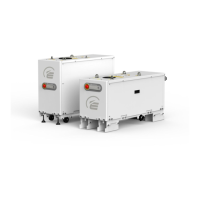
